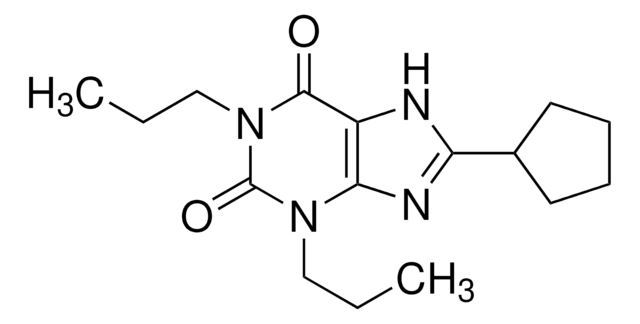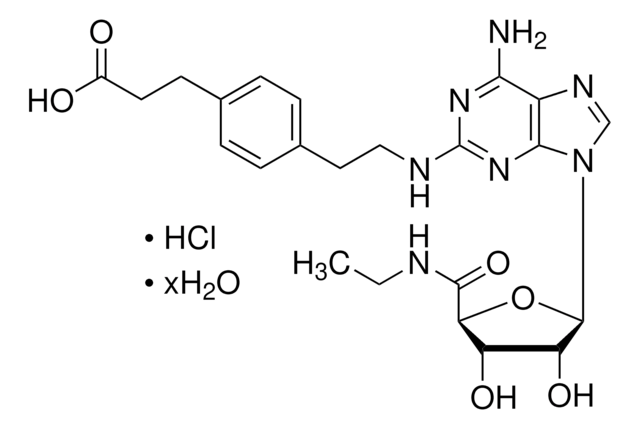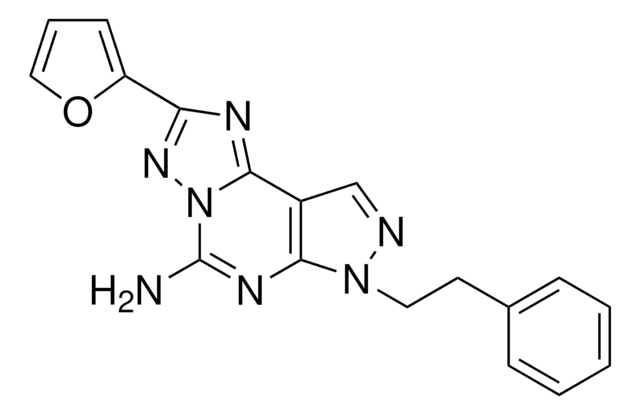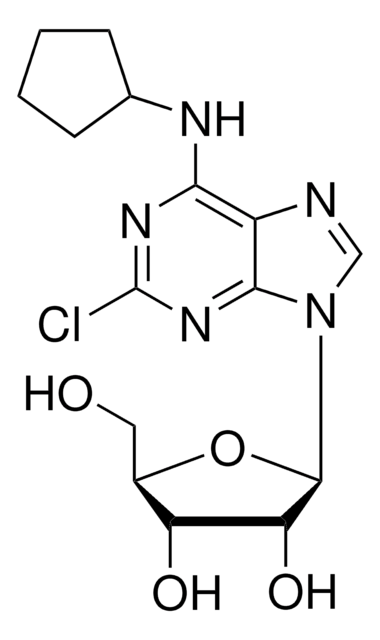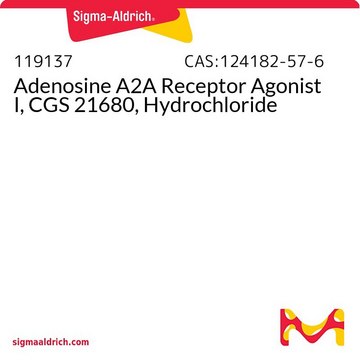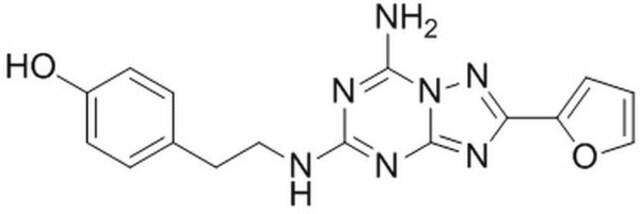D134
3,7-Dimethyl-1-propargylxanthine
≥98% (HPLC), powder
Sinónimos:
3,7-Dimethyl-1-(2-propynyl)xanthine, DMPX
About This Item
Productos recomendados
Nivel de calidad
Análisis
≥98% (HPLC)
formulario
powder
color
white to beige
solubilidad
DMSO: 15 mg/mL, clear
cadena SMILES
CN1C(=O)N(CC#C)C(=O)c2c1ncn2C
InChI
1S/C10H10N4O2/c1-4-5-14-9(15)7-8(11-6-12(7)2)13(3)10(14)16/h1,6H,5H2,2-3H3
Clave InChI
IORPOFJLSIHJOG-UHFFFAOYSA-N
Información sobre el gen
human ... ADORA2A(135) , ADORA2B(136)
rat ... Adora1(29290) , Adora2a(25369)
¿Está buscando productos similares? Visita Guía de comparación de productos
Aplicación
- to study its effects on potential modulation of motor output elicited by epidural spinal stimulation (ESS)
- to study the role of A2a receptor in elevating cyclic adenosine monophosphate (cAMP) levels
- to study its effects on the cell viability of human gastric cancer cell line
Acciones bioquímicas o fisiológicas
Palabra de señalización
Warning
Frases de peligro
Consejos de prudencia
Clasificaciones de peligro
Eye Irrit. 2 - Skin Irrit. 2 - STOT SE 3
Órganos de actuación
Respiratory system
Código de clase de almacenamiento
11 - Combustible Solids
Clase de riesgo para el agua (WGK)
WGK 3
Equipo de protección personal
dust mask type N95 (US), Eyeshields, Gloves
Certificados de análisis (COA)
Busque Certificados de análisis (COA) introduciendo el número de lote del producto. Los números de lote se encuentran en la etiqueta del producto después de las palabras «Lot» o «Batch»
¿Ya tiene este producto?
Encuentre la documentación para los productos que ha comprado recientemente en la Biblioteca de documentos.
Nuestro equipo de científicos tiene experiencia en todas las áreas de investigación: Ciencias de la vida, Ciencia de los materiales, Síntesis química, Cromatografía, Analítica y muchas otras.
Póngase en contacto con el Servicio técnico